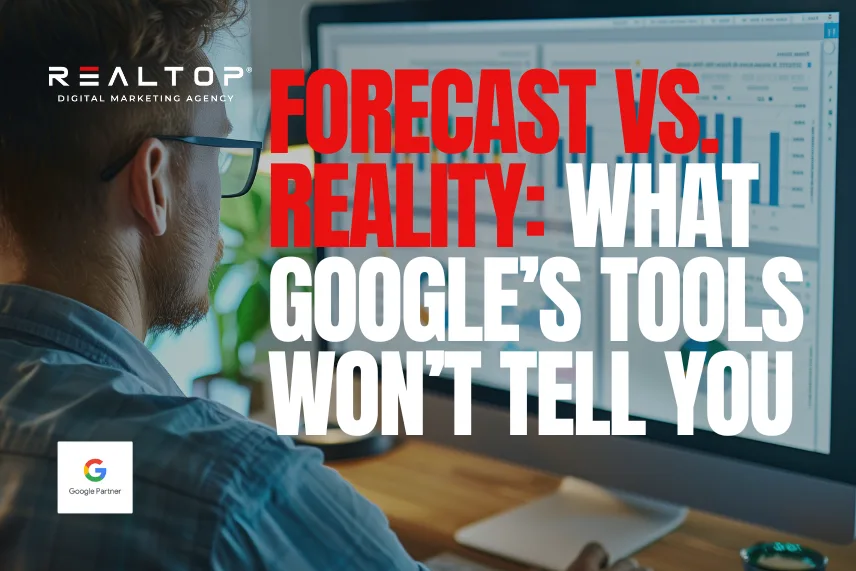
Google Ads tools offer predictions — but what happens when they fall short?
It’s easy to trust Google’s forecasts when planning your campaigns. After all, it’s Google — the data must be correct. However, too many advertisers take projections at face value, only to be blindsided by poor results, wasted budget, or misleading expectations.
This post discusses what Google doesn’t tell you, why their tools are only part of the puzzle, and what a real agency uncovers when forecasting ad performance.
1. Google Forecasts Are Based on Ideal Conditions — Not Your Setup
Google’s keyword planner and forecast tools assume your campaigns are built perfectly:
- Hyper-relevant ad copy
- Fast, mobile-optimized landing pages
- Crystal-clear call-to-actions
- Seamless conversion tracking
But if your campaign has broken links, misaligned messaging, or a slow site, those forecasts go out the window. Forecasts assume the best-case scenario, not your actual environment.
2. Average Data Doesn’t Reveal Your Competition’s Moves
Based on historical averages, forecasts show click costs, traffic potential, and impression share.
They don’t show:
- How aggressively your top competitors are bidding
- If someone just ramped up the budget in your exact ZIP code
- What seasonality shifts or promotions are distorting auction prices
Your competitor’s playbook isn’t in the forecast, but it’s impacting your results.
3. Google’s Tools Don’t Flag Structural Issues
Forecasts don’t tell you if your campaign structure is holding you back.
Common issues that go unnoticed:
- Poor match type usage (e.g., too many broad terms)
- Cannibalized keywords competing against each other
- Low Quality Scores from weak landing page alignment
Without a manual audit, these problems quietly drain performance, even with great forecasts.
4. There’s No Forecast for Lead Quality
Google can estimate volume, CPC, and conversions — but not lead quality.
We’ve seen campaigns with great cost-per-lead averages, but nearly all the leads were:
- Unqualified
- In the wrong geography
- Existing customers clicking again
Human review and CRM feedback tie forecasted performance to actual business impact.
5. Conversion Tracking Isn’t Guaranteed — Even if Google Thinks It Is
Forecasts assume conversion tracking is working correctly.
But here’s what we find during audits:
- The tags are installed incorrectly or are not firing
- Call tracking numbers are not being replaced properly
- Google is counting “conversions” that aren’t real leads
When the data is broken, the forecast is fiction.
The REAL Forecast Comes From a Real Audit + Strategy
Google’s tools are helpful but can’t replace a full-scope audit.
When we build forecasts, we layer in:
- Full competitor and SERP analysis
- Funnel breakdown by device, geo, and intent
- Real conversion data from CRM or call recordings
- Landing page load times, clickmaps, and scroll behavior
This creates a performance-driven forecast, not just a pretty chart from Google. Do you need a second opinion on your projections?
If you’re planning a new campaign or trying to fix a struggling one, we’ll review your setup and show you what Google missed.
Contact REALTOP today for a consultation and discover how to grow your business online.

Explore insights and strategies from Nik, a digital marketing contributor at RealTop. Browse expert articles on SEO, paid ads, AI, and eCommerce trends.











